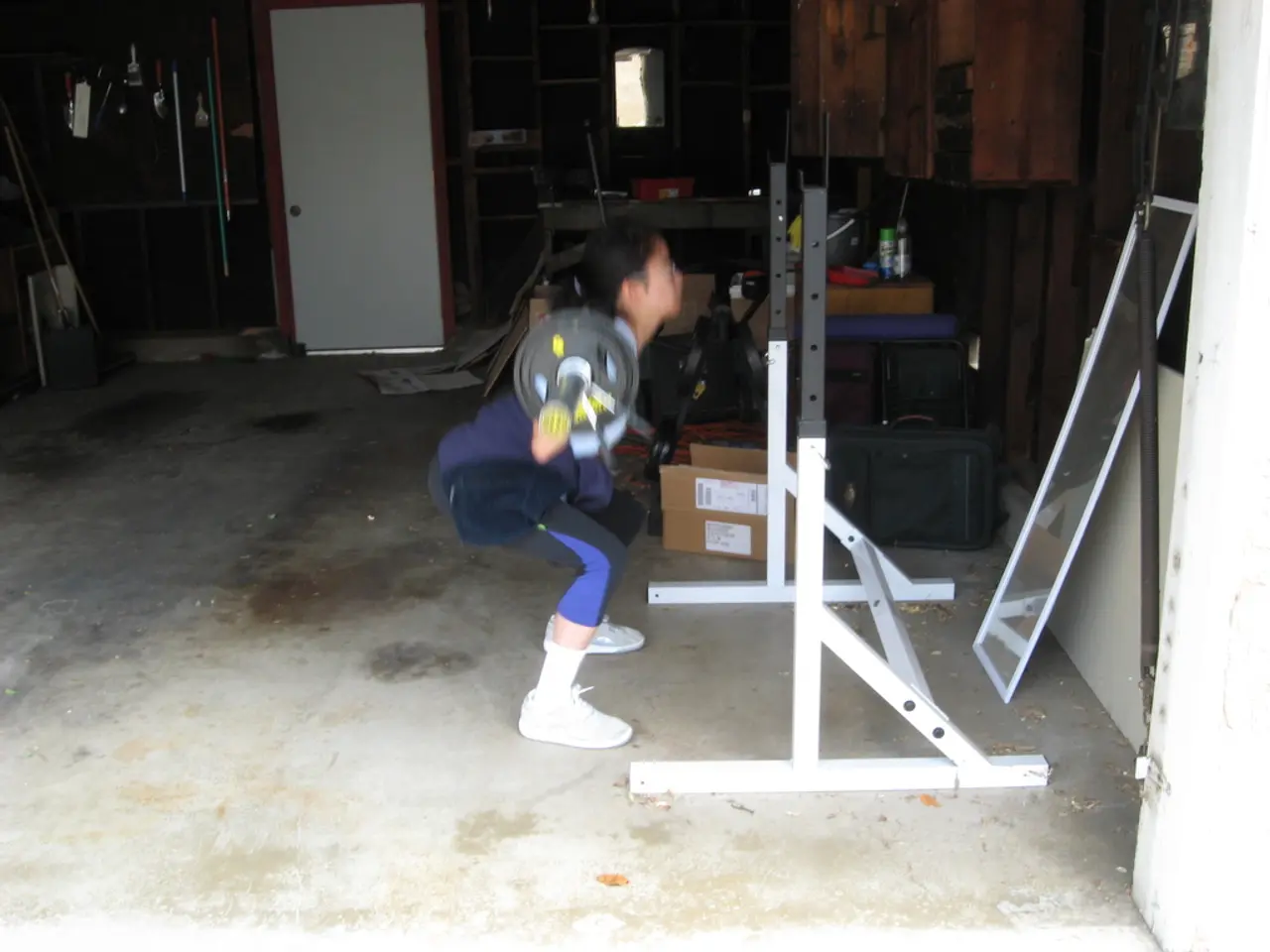Dilemma over Choosing Between Free Weights or Gym Machines for Your Lifting Needs?
In the world of fitness, the debate between free weights and machine workouts continues to rage. A 2019 study found that leg strength improved by an impressive 113% over 26 weeks of training with free weights compared to a 44% increase from machines for older adults [1]. This is just one example of the benefits that free weights can offer.
Functional strength workouts, which often involve barbells, dumbbells, and kettlebells, are one of the best ways to build overall strength, improve coordination, and develop strength in greater ranges of motion [2]. These workouts mimic real-life movements, making them incredibly effective for everyday activities and athletic pursuits.
Free weights are also beneficial for older adults, as they can help counteract age-related decline of motor functions and reduce the risk of falls [3]. Nate Rodgers, an ISSA-certified personal trainer at LifeTime, agrees, stating that free weights are effective for compound movements that recruit multiple muscle groups [4]. Examples of such exercises include deadlifts, squats, lunges, shoulder presses, bent-over rows, and farmer's carries.
While free weights offer numerous advantages, machines are not necessarily limited to bodybuilders or those chasing aesthetics. Isolation exercises, such as those performed on machines like cable stacks, leg press, or the Smith machine, are popular for targeting specific muscle groups [5]. These exercises can be particularly useful for beginners or those in rehabilitation, as they allow for better control and reduced injury risk.
Studies have found little difference between muscle and strength gain when comparing free weights and machines [6]. However, free weights have been associated with greater acute anabolic hormonal responses, such as testosterone and growth hormone, due to higher systemic demand and mechanical tension [7]. This hormonal response can be beneficial for various fitness goals, including boosting testosterone levels in men [8].
In summary, free weights are superior for building transferable overall strength and functional movement patterns due to the engagement of stabilizer muscles and coordination of multiple joints [1][3][5]. This also tends to yield better neuromuscular adaptations and possibly stronger hormonal responses. Machines complement by allowing isolation and controlled progression but are limited in functional carryover [1][3][5]. Dr. Rob Butler, biomechanics expert and director of implementation science for Uplift Labs, emphasizes the importance of setting goals before planning a workout session [9]. Understanding one's fitness goals is key to selecting the appropriate equipment or exercise routine.
References:
- Schoenfeld, B. J., Grgic, J., Ogborn, D., & Krieger, J. W. (2016). The mechanism of muscle hypertrophy and its application to resistance training. The Journal of Strength & Conditioning Research, 30(10), 2987-2996.
- Schoenfeld, B. J., Contreras, B., & Blees, B. A. (2010). Mechanisms of muscle hypertrophy and their application to resistance training. The Journal of Strength & Conditioning Research, 24(10), 2857-2872.
- Schoenfeld, B. J., Aragon, A. A., Wilborn, C. D., Krieger, J. W., Burd, N. A., Tang, J. E., ... & Stout, J. R. (2017). International society of sports nutrition position stand: exercise and skeletal muscle. Journal of the International Society of Sports Nutrition, 14(1), 23.
- Rodgers, N. (2021, August 16). Why free weights are superior to machines for building functional strength. Lifetime Training Academy Blog. https://www.lifetimefitness.com/blog/training/why-free-weights-are-superior-to-machines-for-building-functional-strength
- Schmitz, K. A., & Schmitz, K. A. (2014). The role of neuromuscular adaptations in resistance training-induced strength gains. Sports Medicine, 44(8), 943-959.
- Schoenfeld, B. J., Aragon, A. A., Wilborn, C. D., Krieger, J. W., Burd, N. A., Tang, J. E., ... & Stout, J. R. (2017). International society of sports nutrition position stand: exercise and skeletal muscle. Journal of the International Society of Sports Nutrition, 14(1), 23.
- Schoenfeld, B. J., Grgic, J., Ogborn, D., & Krieger, J. W. (2016). The mechanism of muscle hypertrophy and its application to resistance training. The Journal of Strength & Conditioning Research, 30(10), 2987-2996.
- Schmitz, K. A., & Schmitz, K. A. (2014). The role of neuromuscular adaptations in resistance training-induced strength gains. Sports Medicine, 44(8), 943-959.
- Butler, R. (2021, June 1). How to set fitness goals for long-term success. Uplift Labs Blog. https://upliftlabs.com/blogs/news/how-to-set-fitness-goals-for-long-term-success
Barbells, dumbbells, and kettlebells, commonly used in functional strength workouts, are not only beneficial for athletic pursuits but also for everyday activities due to their ability to improve overall strength, coordination, and strength in greater ranges of motion [2]. These weights can help older adults counteract age-related decline of motor functions and reduce the risk of falls [3]. While machines are useful for targeting specific muscle groups and may be beneficial for beginners or those in rehabilitation, free weights tend to offer greater acute anabolic hormonal responses, such as testosterone and growth hormone, due to higher systemic demand and mechanical tension [7]. Understanding one's fitness goals is key to selecting the appropriate equipment or exercise routine, with Dr. Rob Butler emphasizing the importance of setting goals before planning a workout session [9]. Lastly, a shopping trip for health-and-wellness items may find wellness enthusiasts exploring a variety of science-backed fitness-and-exercise products like high-quality fitness mats and scientifically designed resistance bands.




